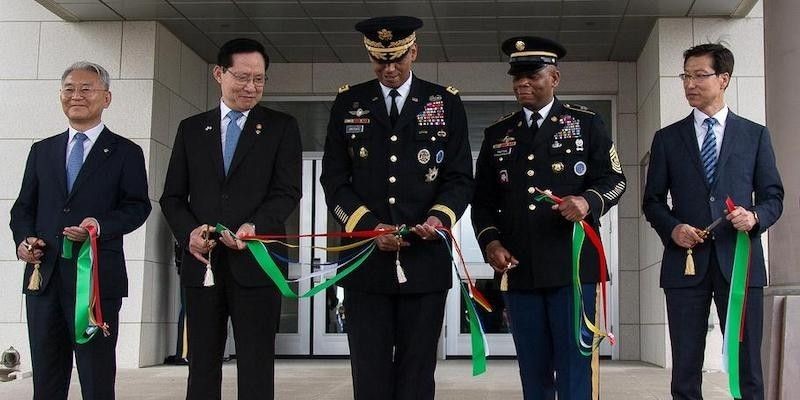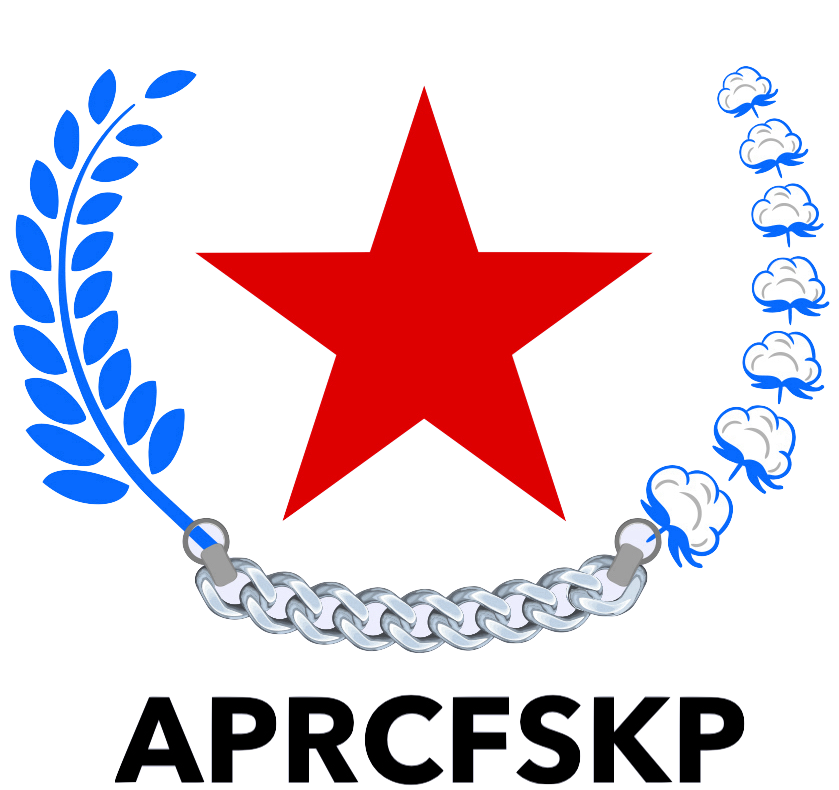The United Nations Command - Time to Withdraw Use of the UN Flag

Peter Wilson, Secretary, NZ DPRK Society
In 2018 an impressive new ‘United Nations Command HQ’ building was opened at the USA’s Camp Humphreys military base in South Korea.
In June 2020 a fancy new official ‘United Nations Command’ website was unveiled.
In this cyber age when virtual reality can be more striking than real life, the UN Command must be real.
It has a website. Therefore, it is.
But does it really exist?
In New York the United Nations certainly doesn’t think so.
According to three past United Nations Secretary Generals - Boutros Boutros-Ghali, Kofi Annan and Ban Ki-moon - the United Nations has “never had any role in the command of any armed forces deployed in the Korean peninsula”.
In New York, the United Nations Command is seen as a mirage. It appears to be visible, even though it does not legally exist.
In Washington the Pentagon and Foggy Bottom fervently propagandize the United Nations Command as a reality.
Creation of the Mirage
In the late 1940’s, conscious that the British Empire was finished, the United States wanted to use some smoke and mirrors to get some scores on the board and anoint itself as the world’s pre-eminent super power.
The United States economy was tanking. The economic boost from manufacturing for WWII was over. GDP had regressed to early 1930s levels. The hunt was on for another war to get the armament factories going again. Preferably somewhere far away.
Conveniently, across the Pacific, a civil war was taking place. Syngman Rhee and Kim Il-sung were jostling for dominance on the Korean Peninsula. Both sides were regularly mounting raids into each other’s ”territory” across the informal 38th Parallel.
In 1950 the United States decided to help Syngman Rhee their man in Seoul. Two birds could be killed with one stone. They could demonstrate their pre-eminence to the world and factories could boost GDP by producing lots and lots of lovely of armaments.
Born in a burst of pacifist idealism after WWII, a new and naive United Nations allowed itself to be conned into endorsing USA’s war of choice in Korea.
Under pressure from Washington, the United Nations Security Council passed Resolution 83 (27 June 1950) which recommended that members provide military forces and other assistance to South Korea and "make such forces and other assistance available to a unified command under the United States of America".
This was followed up ten days later by Resolution 85 (7 July 1950) Clause Five of which authorised “the unified command at its discretion to use the United Nations flag in the course of operations against North Korea concurrently with the flags of various nations participating”.
Washington appointed General MacArthur, who was resident in occupied Japan, as Commander-in Chief of the Unified Command in South Korea, concurrent with his existing role as Commander-in Chief, Far East.
Well-practised in the art of self-aggrandisement, a narcist of Trumpian proportions, MacArthur puffed out his chest and called himself the Commander-in Chief of the ‘United Nations Command’.
Although this name was never sanctioned by the United Nations, the USA still claims to be operating in South Korea under authorisation of the ‘United Nations Command’.
Sixteen (what have become known as) ‘sender states’ sent troops to assist South Korea and served under MacArthur’s so called ‘United Nations Command’.
The mirage was born, and endures to this day.
General Assembly Recommendation to Dissolve the United Nations Command
Not happy at the hijacking of its name, the United Nations was slow to move. But move it did.
In November 1975 the General Assembly passed Resolution 33390 (XXX) which stated that it:
(1) “Considers that it is necessary to dissolve the “United Nations Command” and withdraw all the foreign troops stationed in South Korea under the flag of the United Nations;
(2) Calls upon the real parties to the Armistice Agreement to replace the Korean Armistice Agreement with a peace agreement as a measure to ease tension and maintain and consolidate peace in Korea”
This resolution has not been acted upon.
Korean position on the United Nations Command
Koreans in both North and South have made it clear they want the United Nations Command to be disbanded.
North Korea has repeatedly asked for GA Resolution 33390 to be implemented – as exemplified in this letter to the President of the Security Council in June1995:
“The "United Nations Command" is a bogus organization created by the United States and serves the unjust strategic aim of the United States to isolate and stifle the Democratic People's Republic of Korea and control the Asia and Pacific region regardless of the United Nations mission for peace… The United States should take an urgent step to dismantle the "United Nations Command" as was stipulated by the resolution adopted at the thirtieth session of the General Assembly”.
South Korea President Moon’s special advisor on security and foreign affairs, Professor Moon Chung-in, has been reported as saying that “the biggest obstacle to better inter-Korean ties is the UN Command”. Former Presidential Chief of Staff Im Jong-seok has said that “the UN Command is abusing its powers beyond control”, and Vice Foreign Minister Cho Sei-young has talked about the need to “change the role of the UN Command by declaring the formal ending of the Korean War armistice.”
United Nations Position on Dissolution of the United Nations Command
Despite Resolution 3390 and demands from both North and South Korea, the United Nations has not acted. Their position was summarised by Secretary General Boutros Boutros-Gali in a 1994 letter to the North Korean Foreign Affairs Minister, when he said that:
“The Security Council did not establish the unified command as a subsidiary organ under its control, but merely recommended the creation of such a command, specifying that it be under the authority of the United States. Therefore the dissolution of the unified command does not fall within the responsibility of any United Nations organ but is a matter within the competence of the Government of the United States.”
This is a cop out.
What the United Nations should do
Secretary General Boutros Boutros-Gali may have been right in stating that it is not within the competence of the United Nations to dissolve the unified command.
But there is one thing the United Nations can and should do.
For 70 years the United States has been using the United Nations flag as a flag of convenience to place mask of respectability on its military occupation of South Korea.
The United Nations should revoke Clause Five of SC Resolution 85 and withdraw the right of the USA to use the United Nations flag in South Korea. 


